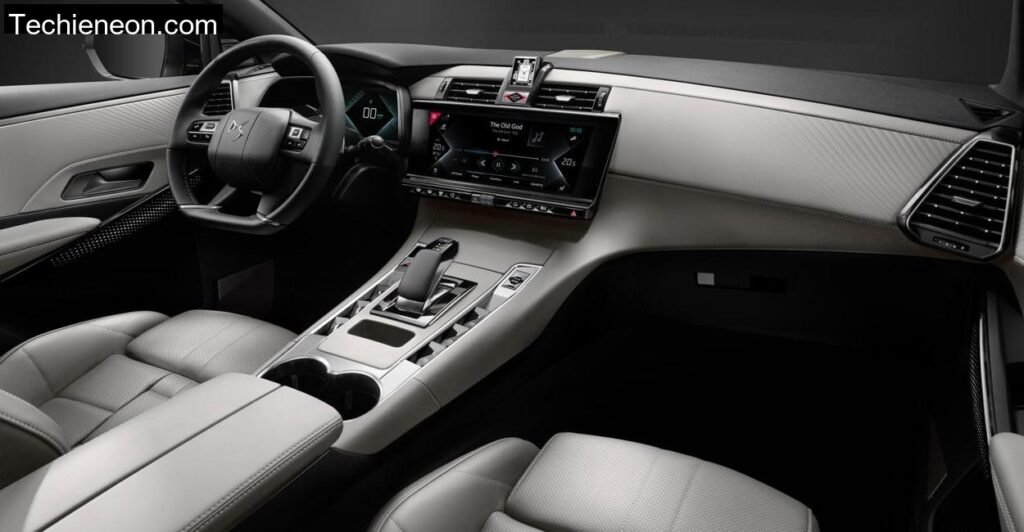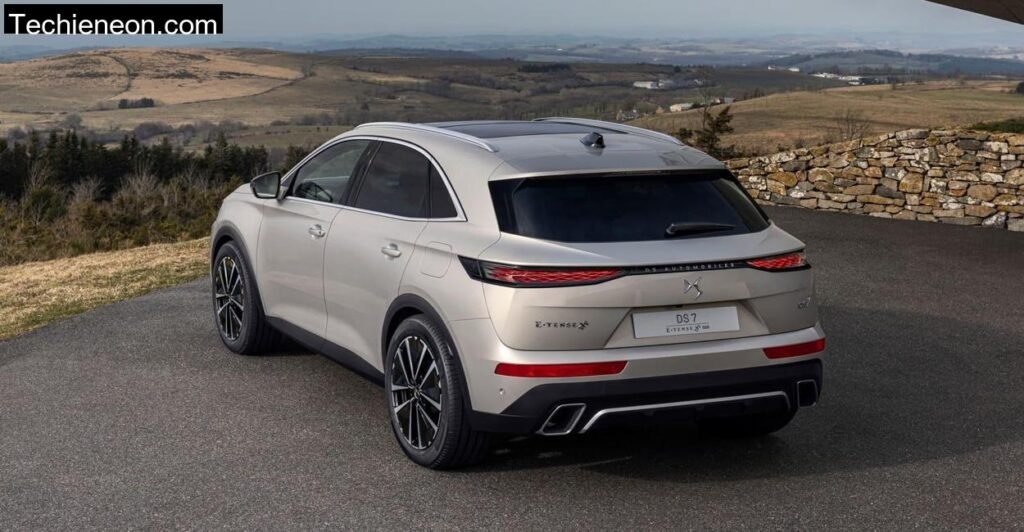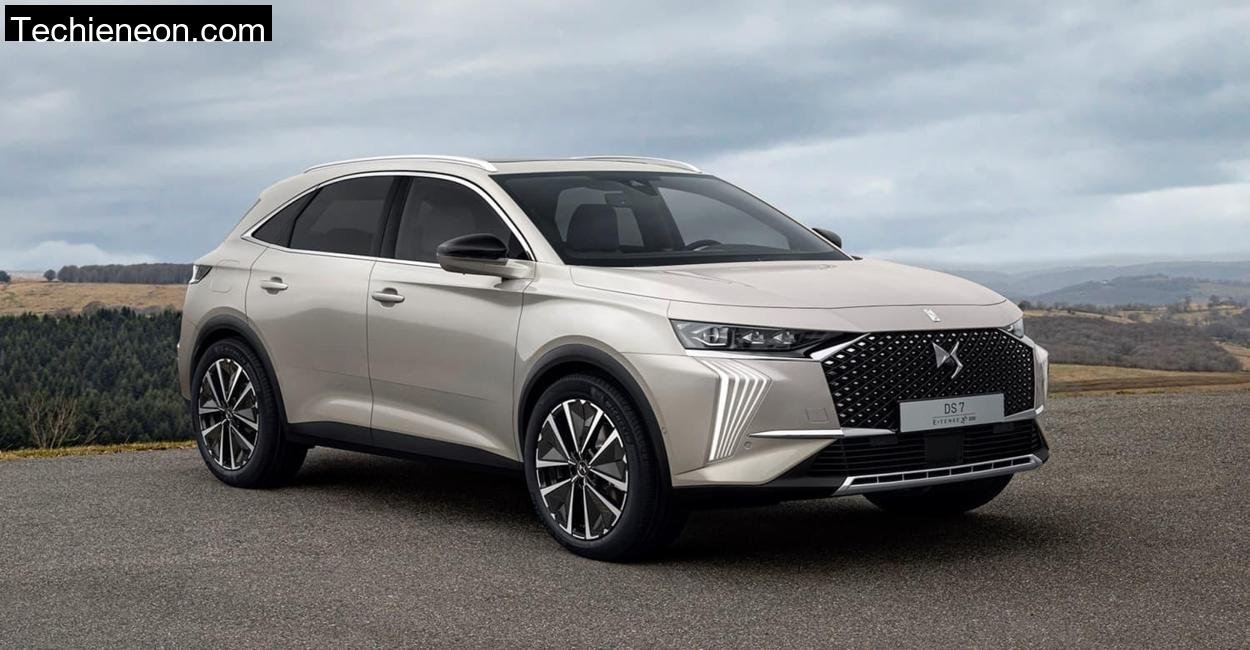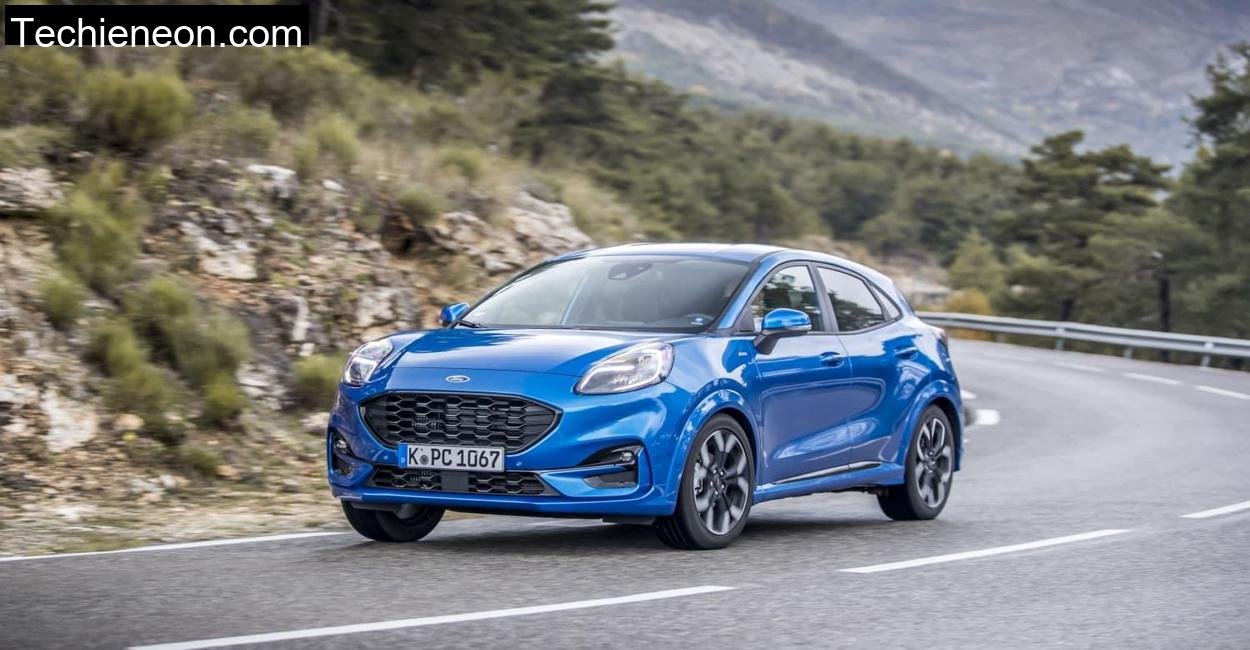DS 7 AWD 300: The Plug-in Hybrid in the Test
Let’s not beat around the bush: the DS 7 AWD 300 is a heavy hitter on paper. Under the hood (and under the floor), it combines a 200-hp turbocharged four-cylinder petrol engine with two electric motors, one on each axle. That gives it not only all-wheel drive but a total system output of 300 hp and a healthy 520 Nm of torque.
Out on the steep ascents of the Alpenstraße near Oberammergau, this setup proved lively. From hairpin to hairpin, the electric motors filled in torque gaps almost instantly, especially useful when accelerating out of corners at altitude. The transition between electric and combustion power was surprisingly seamless, smooth, but never completely unnoticeable. In full power mode, the DS 7 darted from 0 to 100 km/h in just under six seconds, a number that’s impressive for a nearly two-ton SUV.
Despite its weight, the DS 7 handles mountain curves with a sense of composure. It’s no sports car, but then again, it doesn’t pretend to be. Instead, the magic is in its ability to cruise quietly and confidently, all while enveloping you in quilted leather and ambient lighting.
14 kWh Battery Charges with a Maximum of 7.4 kW
The facelifted DS 7 now houses a 14 kWh lithium-ion battery, tucked beneath the cabin floor. While that figure sounds promising, the reality of using it is more sobering. At best, it supports AC charging up to 7.4 kW, enough to replenish the battery in just under two hours from a home wallbox. But if you’re using a standard household socket? You’re looking at nearly seven hours.
During our alpine test days, I topped up the DS 7’s battery at a public 11 kW AC station in Mittenwald. Charging peaked around 7.2 kW, taking just under two hours to go from 10% to full. Enough time to sip a cappuccino and take in the mountain air, but not something you’d bother doing on a tight schedule.
Around 50 Kilometers of Purely Electric Range

Officially, the DS 7 E-Tense AWD 300 can cover around 50 to 60 kilometers on electric power alone. In our mixed test route, city detours, gravel mountain passes, and some light-footed cruising, I managed 48.3 kilometers before the petrol engine kicked in.
It’s not earth-shattering, but for the daily commute or short errands, it’s enough. The drive through Garmisch-Partenkirchen was near silent, with the e-motors humming gently beneath the luxury cabin. Climbing more demanding gradients, however, quickly depleted the battery, even regenerative braking on descents couldn’t fully counter the drain.
Still, for those living in towns or on the fringe of a city, the DS 7 could feasibly deliver all-electric commuting Monday through Friday. Just don’t forget to plug it in nightly.
Plug-in Hybrid with Only Three Stars in the Ecotest

The DS 7 AWD 300 might seem efficient at first glance, but its environmental impact tells a more complex story. According to the Ecotest, its combined consumption with a full battery is 10.3 kWh and 4.3 liters of petrol per 100 km. That translates to 177 grams of CO₂ per kilometer (well-to-wheel), a figure that only earns it three out of five stars.
The primary culprits? Its hefty weight and less-than-stellar emission control from the combustion engine. Even driving cautiously, I struggled to keep petrol usage low once the battery was depleted.
This isn’t a Prius, it’s a nearly two-ton luxury SUV trying to balance opulence with environmental virtue. And the scales still tip towards indulgence.
Test Result: Lots of Light, But Also Shadows
The DS 7 AWD 300 has a lot going for it. Comfort? Undeniably top-class. The cabin is a cocoon of premium materials, with a flair that German rivals often lack. The adaptive suspension reads the road surface and adjusts damping in real-time, delivering a glide-like ride on rough tarmac and gravel alike.
However, not everything sparkles. The infotainment system, though updated, is still clunky to use. Touch response is laggy, and voice commands often misfire. And the steering? It weights up nicely in corners, but offers little feedback.
In an emergency lane change at 90 km/h (the evasive maneuver test), the DS 7 struggled to maintain composure. It’s a cruiser, not a corner carver.
DS 7: The Prices
Pricing is predictably premium. The entry-level diesel DS 7 starts at €47,000. The 225-hp plug-in hybrid is priced from €53,400, while the AWD 300 version we tested begins at €58,500 in “Pallas” trim. Add the usual options, better leather, upgraded audio, advanced driver assists, and you’re easily past €65,000.
Top trims include “Etoile” at €63,400 and the limited “Antoine de Saint Exupery Collection” at €62,500. There’s also a 360 hp performance version from €66,700.
Conclusion
Driving the DS 7 E-Tense AWD 300 in the Bavarian Alps was a mixed emotional journey, much like the car itself. It’s a beautiful machine, offering rare French charm in a sea of pragmatic crossovers. It glides over rough terrain, keeps you wrapped in style, and even goes fully electric for a short while.
But it’s also a symbol of compromise. The electric range, while decent, isn’t revolutionary. The CO₂ numbers aren’t as clean as the green badge might suggest. And its infotainment tech still lags behind rivals.
Would I recommend it? Yes,if you value style, comfort, and can charge it daily. No, if your priority is ecological purity or razor-sharp driving dynamics.



Leave a Comment